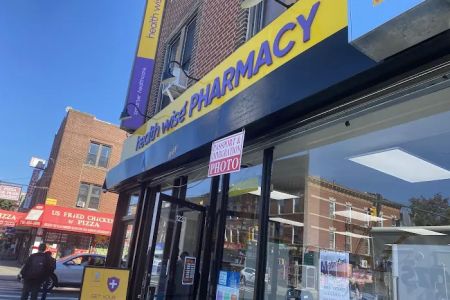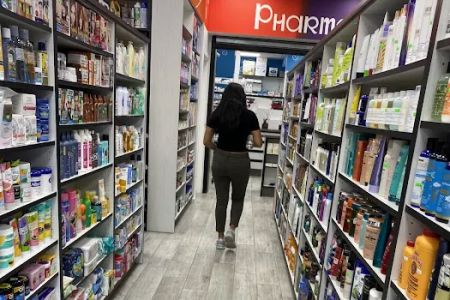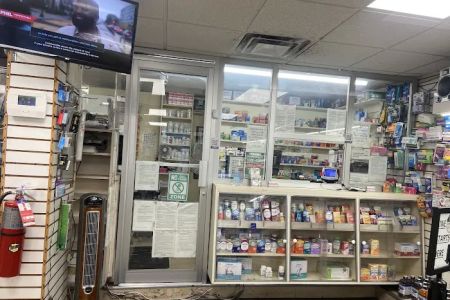Pharmacy Medication Error Reporting Systems: Ensuring Safety and Accuracy in Medication Dispensing
As someone who has worked in healthcare for several years, I’ve seen firsthand how crucial it is to ensure the accuracy and safety of medication dispensing. Medication errors, while unfortunately common, can have serious consequences for patients. As a result, pharmacy medication error reporting systems have become an essential tool in preventing, identifying, and addressing these errors. These systems play a pivotal role in improving patient safety, reducing risks, and fostering a culture of continuous improvement in pharmacy practice.
In this article, I’ll explore what pharmacy medication error reporting systems are, how they work, and why they are so important. I’ll also share my personal experiences with these systems and explain how they contribute to better patient outcomes. Whether you're a pharmacist, healthcare professional, or just someone interested in the field, understanding these reporting systems is crucial for promoting safe medication practices in pharmacies.
1. What are Pharmacy Medication Error Reporting Systems?
Pharmacy medication error reporting systems are tools and protocols used by pharmacies to track and report medication errors. These systems help identify potential errors, track the causes of these errors, and suggest improvements. The goal of these systems is not only to correct errors but also to prevent future incidents by analyzing trends and implementing corrective actions. As someone who has used these systems in a professional capacity, I can attest to how invaluable they are for identifying issues that might otherwise go unnoticed.
Medication errors in pharmacies can happen at any point in the medication dispensing process. They can range from incorrect medication being dispensed, wrong dosages being given, to failure to provide critical medication information to the patient. Pharmacy error reporting systems allow these incidents to be documented, reviewed, and analyzed so that proper steps can be taken to ensure patient safety moving forward.
1.1 The Importance of Reporting Systems
In my own experience working with healthcare teams, I’ve witnessed that reporting medication errors can be a difficult yet essential step toward improving safety. Reporting these errors openly allows pharmacists and healthcare institutions to gain insights into patterns and pinpoint systemic issues that may contribute to errors. The anonymity and confidentiality provided by many reporting systems encourage professionals to submit reports without fear of retribution, fostering a culture of transparency and safety.
2. How Do Pharmacy Medication Error Reporting Systems Work?
Pharmacy medication error reporting systems are designed to collect data on medication errors and analyze that data to prevent future occurrences. Here’s a breakdown of how these systems generally function:
2.1 Incident Reporting
The first step in the process is the identification and reporting of an error. In many pharmacies, pharmacists and technicians are encouraged to report any incident or near-miss, regardless of how minor it may seem. This could include anything from a simple labeling mistake to more significant errors like administering the wrong medication or dosage. In my practice, I’ve learned that even the smallest errors should be reported so that patterns can be identified and mitigated early.
2.2 Data Collection and Analysis
Once an error is reported, the system compiles data on the incident, including details such as the type of error, the medication involved, and the potential consequences. This data is then analyzed to identify common factors or trends, such as specific medications that are involved in multiple errors or certain times of day when errors are more likely to occur. In one instance, we identified a recurring issue with a specific drug, and through further analysis, we discovered a problem with its labeling that led to frequent dispensing errors.
2.3 Corrective Actions and System Improvements
After analyzing the data, pharmacies can implement corrective actions to address the root causes of errors. These actions may include changes in workflow, additional staff training, or adjustments to the pharmacy’s procedures. In my case, the identification of the labeling issue led to a redesign of the labeling process, significantly reducing errors related to that drug. These corrective actions are key to preventing future errors and improving patient safety overall.
3. Types of Pharmacy Medication Error Reporting Systems
There are different types of reporting systems used by pharmacies, each designed to fit the specific needs of the pharmacy environment. From manual paper-based systems to automated digital platforms, here are some of the most common types:
3.1 Manual Reporting Systems
In many smaller or more traditional pharmacy settings, medication error reporting might initially begin with a paper-based system. In this case, staff members complete written reports whenever an error occurs. While this system can be effective, it can also be slow and prone to human error, especially in busy pharmacy environments. I’ve seen how paper-based systems can lead to underreporting simply because the process of filling out a form is time-consuming and can be forgotten during high-stress periods.
3.2 Digital Reporting Systems
More modern pharmacies use digital reporting systems, which allow pharmacists to report errors via software platforms. These systems typically integrate with other pharmacy management software, making it easier to track and manage incidents in real time. Digital systems often include features like automatic notifications, data analysis tools, and easier access to past reports. I’ve found digital systems to be much more efficient and user-friendly, allowing for quicker incident reporting and more detailed analysis.
3.3 National Reporting Systems
In addition to internal pharmacy systems, there are also national reporting systems like the U.S. Food and Drug Administration’s (FDA) MedWatch program and the Institute for Safe Medication Practices (ISMP) National Medication Error Reporting Program. These programs allow healthcare professionals to report medication errors on a national level, creating a more comprehensive database of incidents that can be analyzed to identify trends and improve safety across the entire healthcare system. While I’ve personally never reported to a national system, it’s an invaluable resource for identifying large-scale issues within the healthcare system.
4. Benefits of Pharmacy Medication Error Reporting Systems
Pharmacy medication error reporting systems provide numerous benefits that go beyond simply reducing errors. Here are a few of the key advantages I’ve seen firsthand:
4.1 Improved Patient Safety
The most obvious benefit of medication error reporting systems is improved patient safety. By tracking and analyzing medication errors, pharmacies can identify and address issues that could lead to harm. In my experience, reporting and addressing even minor mistakes has led to more effective safeguards in place to prevent major incidents from occurring in the future.
4.2 Better Workflow and Efficiency
As pharmacies continue to streamline their operations, reporting systems also help improve workflow. By identifying bottlenecks or common areas where errors occur, pharmacies can adjust their processes to minimize these issues. I’ve personally seen how improving the medication dispensing workflow—thanks to the insights provided by error reporting—has led to faster, more efficient service for patients without compromising safety.
4.3 Continuous Learning and Staff Development
Medication error reporting systems also provide a valuable learning opportunity for pharmacy staff. By regularly reviewing error reports and discussing them in team meetings, staff members can learn from past mistakes and stay informed about best practices. I’ve attended several team discussions where errors were reviewed, and we collectively brainstormed ways to prevent similar incidents in the future. This continuous learning fosters a safer and more effective work environment.
5. Challenges and Barriers to Reporting Medication Errors
Despite the numerous benefits, there are still challenges to implementing effective medication error reporting systems. In my own experience, I’ve encountered a few common barriers:
5.1 Underreporting
One of the biggest challenges is underreporting. In busy pharmacies, staff may be reluctant to report errors due to time constraints or fear of retribution. This is why it’s important for pharmacies to foster a culture of openness, where reporting errors is seen as an opportunity to learn and improve, rather than something to be punished.
5.2 Lack of Proper Training
Another challenge is the lack of training on how to use reporting systems effectively. For a system to be successful, all staff members need to understand how to report errors properly and know the importance of doing so. I’ve seen how training can sometimes be overlooked, leading to confusion and mistakes when it comes time to report an incident.
5.3 Data Privacy and Security
Lastly, privacy and security concerns can sometimes create hesitations when it comes to reporting. Ensuring that reporting systems are secure and that patient confidentiality is maintained is vital. This is why many systems now include encryption and other security measures to protect sensitive information.
Despite these challenges, the importance of medication error reporting cannot be overstated. The benefits—improved patient safety, better efficiency, and continuous improvement—far outweigh the obstacles. By embracing error reporting systems, pharmacies can create a safer environment for both patients and healthcare professionals.
If you’re looking to learn more about medication error reporting systems or explore ways to improve safety in your pharmacy, I recommend checking out Pharmacy for valuable insights and services tailored to pharmacy needs.














